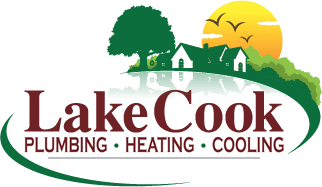Understanding Different Water Heater Installations
- Plumbing
Like a lot of the appliances in our home today, we don’t necessarily realize how important they really are or how much we rely on them. When it comes to your water heater, we don’t notice any issues until it finally decides to stop working. One thing to note about water heaters is that today, they are built to last ten years, due to it’s planned-out installation. If your water heater has lived past ten years, then it’s basically living on borrowed time. Water heaters are designed to fail at some point, the same way a car does when it’s warranty coverage runs out or even refrigerators. That is why it is important to understand water heater installations and the different components associated with different types.
What Does Lake Cook Know About Water Heater Installations?
Lake Cook prides itself on high-quality service and when it comes to how we do business, we always put the customer first. All our plumbers and contractors are fully-trained and licensed to handle any situation you might throw our way. We’re always open to question in case you need help with your water heater and understanding it. There’s a reason why our company has been around since 1954. It begins with a commitment of superior quality and knowledge, two traits that we continue to carry. So, understand these components of your water heater in case you end up needing a water heater installation.
It Starts with H20
Your hot water heater tanks heat your water, but it must find a way to deliver the hot water to other areas of your home. Your home’s plumbing attaches to your hot water heater’s outlet, drawing more heated water out of the tank. There must be a source of water in order for the hot water heater to be able to warm up. This is called the cold-water inlet, which already provides a supply of cold water for your water heater whenever the tank starts to deplete.
As water leaves your water heater, there’s a change of pressure and temperature. The water heater can become unstable if does not have the ability to relieve pressure. The pressure or temperature relief valve is designed to monitor pressure in case it reaches unstable levels. When it comes to water heater installation, you or the plumber you hire should drain your water heater and clean the collecting sediment. The drain clock, which sits at the bottom of the tank, allows you to connect a hose to drain the tank.
Gas-Fired Water Heater Components
The heating component of a gas-fired water heater is located at the bottom, which means the cold water is delivered there first. The dip tube sends cold water to the bottom of the tank for efficient heating. The generation of heat through natural gas creates an exhaust that could potentially be poisonous. Luckily, the water heater vent draws the exhaust safely from the tank and out of the home. Inside the vent is a component called a flue baffle. The flue baffle promotes efficiency within the system, directing heat into the tank instead of the vent, an important water heater installation fixture to know.
The hot water heater tank is lined with protective material designed to minimize leakage and potential corrosion. This material is often made out of glass, stainless steel, or cement. Gas-fired water heaters are connected to your natural gas supply through a control valve. This valve directs fuel to all areas of the water heater, allowing you to light the pilot and heat the water. The control valve must be turned off during a water heater installation or repair, however. And of course, without gas supply, your water heater cannot run. It creates a steady supply of fuel for the water and must always be connected to the control valve.
Electric Water Heaters
Electric water heaters rely on a power source to generate heat, which means the power supply is connected to your electrical system. It’s likely that your power supply wires are hooked to the upper thermostat of the water heater during an electric water heater installation. All water heaters have thermostats as well, but when it comes to electric water heaters, they must have two. With an electric water heater, each thermostat is connected to a heating element. First, the upper thermostat heats the water in the upper third of the tank, while the lower thermostat heats the rest of the water. The minerals in water can also corrode the tank over time, which is why a magnesium anode is installed. The anode rod is designed to attract the minerals so that the rod will corrode before the tank does. Ultimately, the anode rod must be replaced regularly.
Continue to learn more about your water heater installations and call Lake Cook Plumbing today for all plumbing services!


